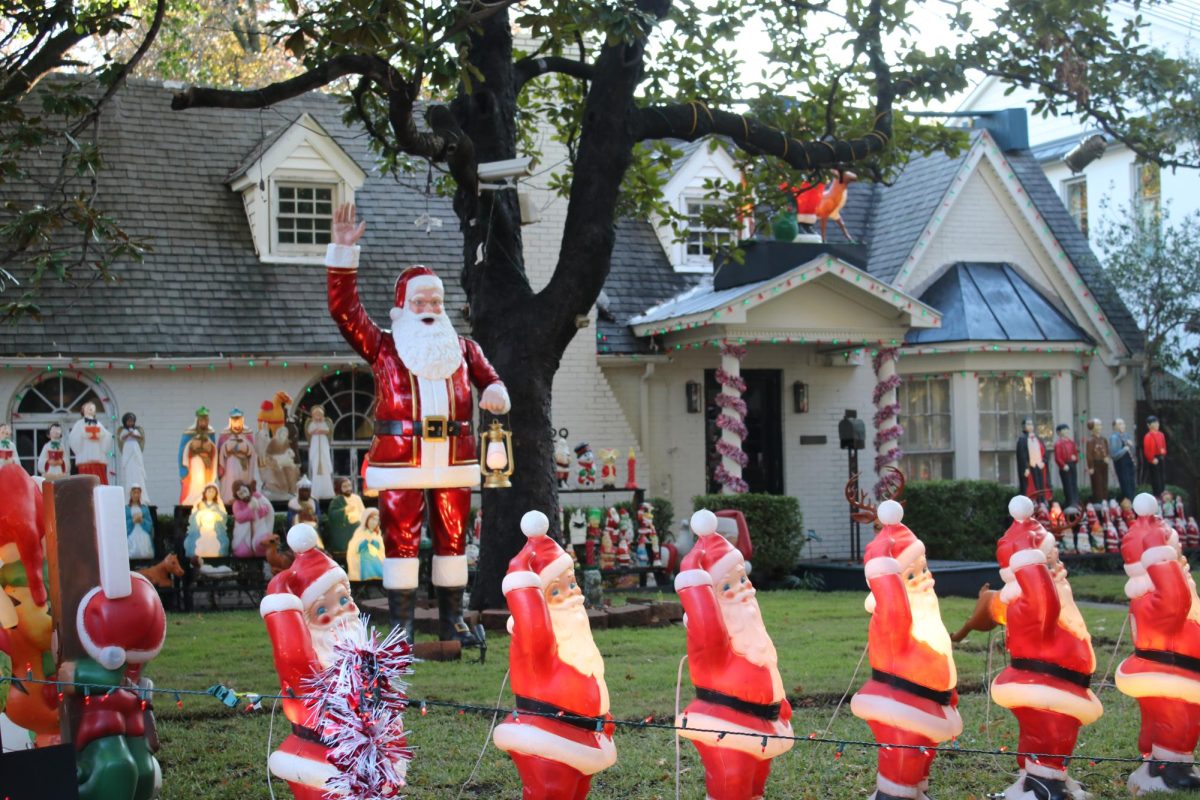With Texas-native artist Gary Panter making a local exhibit, a walk through his influence on local art is key. He has worked in multiple disciplines, including but not limited to animation, illustrator, painting, and sculpting, with his style evolving through the decades.
“His work has spanned so many different sorts of areas of what have become art history at this point; that is what’s amazing to me immediately about him, is that he’s got a very particular sensibility,” Executive Vice President at Heritage Auctions and published writer Todd Hignite said. “It’s interesting to see how his sensibility translates.”
The exhibit showed the multiple types of works that he has produced, and how his personal style and sensibility shone across disciplines.
This skill of knowing and understanding complex emotions and aesthetics allowed for Panter’s cultural influences to grow. The beginning of his artistic journey began in his hometown in Brownsville, Texas. Panter’s work uses multiple inspirations from his original surroundings.
“South Texas had a giant effect [on his art]; the color and the palm trees, desert plants, horn toads, the animal life, the smells of certain trees,” Panter said.
Panter said that being raised in a small town allowed for his mind to expand his creativity. During this time, in the 60s, a new genre of comics took place, one that Panter draws constant inspiration from.
“Hippie comics in the 60s were breaking down barriers, and so at the beginning of the 60s there was art, painting, sculpture, music, rock music, magazines,” Panter said, “the world seemed more black and white in the 50s, and color came into the world in the 60s to great extent.”
Panter’s comics work to pull the viewer back to the 60s, bringing back good vibes and positive outlooks on life. His comics had followed the eras and redefined what art is. Utilizing his inspiration from 60s comics, which contained a mixture of monster characters as well as free spirited style, Panter traveled to LA to join the up-and-coming punk rock scene.
“When I entered punk rock, my work was jagged and aggressive,” Panter said, “Jimbo [a character], and he was a punk rocker, and he emerged in punk rock days, and I drew him, and he became a little famous.”
Punk was an underground sensation, challenging norms and changing American culture. Panter utilized this change in scene, creating posters, illustrations and album covers, as well as developing a new comic style.
“[He] changed the language of comics in terms of how he created narratives. There’s this kind of multi dimensional way that he approaches, the typical way of telling a story in comics,” Hignite said, “He was bringing in influences to comics that kind of didn’t exist before, fine art influences.”
With this new style Jimbo the comic character was created, a bold character who travels through different journeys and scenarios. This allows for a character with punk influence and style from the 70s and 80s, to travel to current events and explore this startling and extravagant new world.
“Jimbo functions as sort of this every man character. That enters into these different worlds and sort of gives you a guided tour of these vastly different contexts from punk comics to the more recent things,” Hignite said, “He’s a character that is very elastic. He gives Gary the opportunity to explore all kinds of different worlds in a really interesting way. They’re very humorous, too.”
Panter’s career continues to expand, for he also took interest in designing a children’s show. Expanding his journey to become a children’s show set designer, he met Paul Rubens, and together they collaborated on some shows, including the Pee Wee Playhouse. Panter, along with two other designers Wayne White and Rick Heisman, took the lead on the set design of Pee Wee Playhouse.
“We wanted to make a show that parents could watch with their kids, which is what happened. And college students watched it,” Panter said. “And it’s a psychedelic mind expanding show, and hippies had a dream that we’ll make shows that have claymation, animation, puppets, everything all at once.”
His art knowledge and show expertise largely comes from his childhood influence in Texas. Accomplishing this dream of being a children’s show set designer, he took his art intelligence and moved back to the comforts of Texas. Panter says the vast open space of the countryside inspires him to have huge designs with new bold figures.
“I have my own acre of land to turn into my own world,” Panter said.
The huge space allows for more creativity, with the space inspiring his visual art. Back in Texas, his work has been shown in local galleries, such as the Keijsers-Koning gallery. This exhibit shows his thoughts on Texas through art where he utilizes vivid colors to complete the work.
“He’s been a really positive and helpful influence as a friend and teacher. I think he’s a truly visionary artist,” Goldstein said. “I think he’s a very kind person, and he has a great sense of humor. He’s really inspiring to know.”










